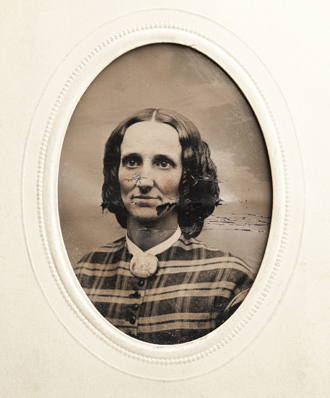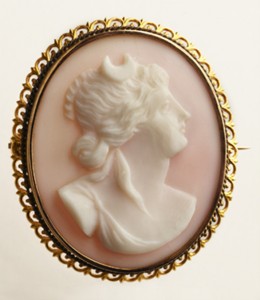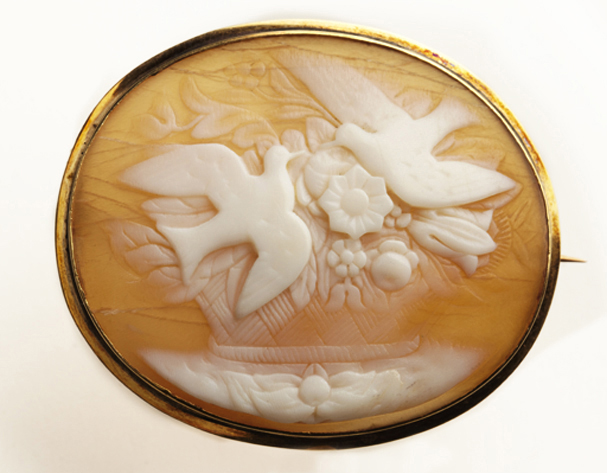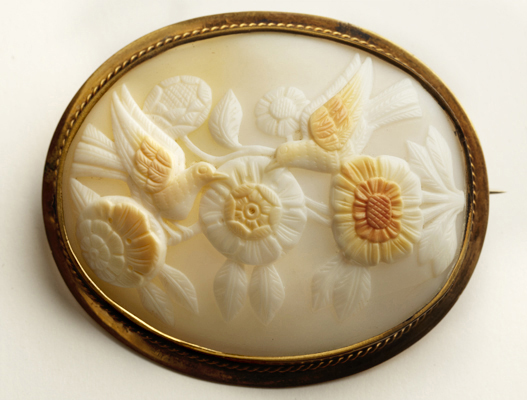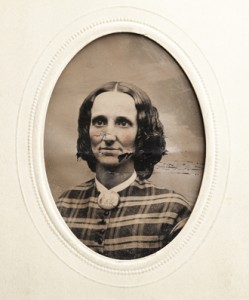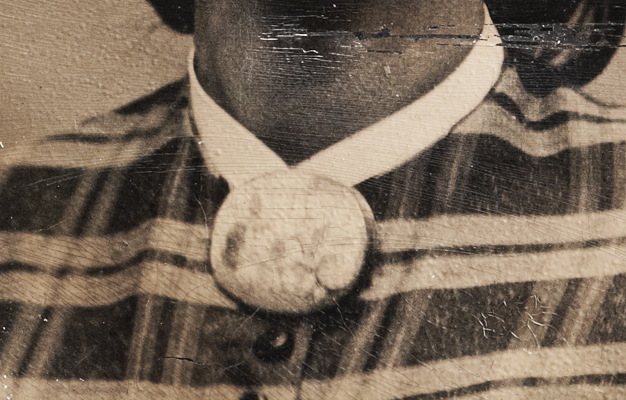P00161 tintype c. 1863;
Found among the pieces in the jewelry collection linked to Mary Baker Eddy are three nineteenth-century cameos. Staff recently dated and identified one cameo as worn by Eddy in one of the earliest photographs owned by the Library—more on this exciting discovery below.
What is a cameo? For many of us, when we hear the word cameo, what springs to mind is the ubiquitous Victorian pin or pendant showing the profile of a lovely woman.
The profile portrait cameo is, indeed, an enduring subject of cameo artistry, but throughout their history, cameo motifs have included depictions of mythology, religious iconography, political leaders, scenes of daily life, and subjects related to popular culture. As with other art forms, the materials used and the subjects depicted on cameos change over time; the use of various motifs appear, fall out of fashion, and then reappear. This is true of the profile portrait cameo, which became very popular in the nineteenth century. Due in part to new technologies, mass production, and assembly line techniques, this type of cameo became readily available, more affordable, and quite fashionable.
True cameos are miniature sculptures created by carving away the surface of a gem, mineral, stone, or shell so that the design projects above the background. This type of relief carving has evolved, over thousands of years, into the art of cameo carving. The word cameo first appeared in the thirteenth century. Cameo refers to the work product, not the material from which the work is made. Shell cameos are believed to have first appeared some time in the fifteenth or sixteenth century. Because they were plentiful and relatively inexpensive, shells were an important material for cameo carving. In the nineteenth century, shell cameos experienced a revival and they became fashionable as daily wear.
Most cameo shells have three layers: an outer rough layer that is usually removed, a white middle layer, and a color layer (gray, various shades of orange, brown, etc.). This second cameo from the Collection clearly shows the white layer and the color layer beneath it.
The third cameo, in an oval gold frame with a decorative rope border detail, is interesting for a number of reasons.
Dating a cameo is not an easy task because designs have been repeated over time and hand carving techniques have remained essentially the same. Modern techniques such as ultrasonic stone cutting can produce new cameos that are then mistaken for old ones. Comparing known dated cameos with undated ones and investigating hallmarks can sometimes give clues to the age of a cameo.
The cameo above is estimated to date from between 1840-1860 based on its style, size, and subject matter. Of greatest interest, however, is the recent realization that this shell cameo is the one worn by Mary Baker Eddy (then Mrs. Mary Patterson) in a tintype dated c.1863. Although the cameo may be of an earlier date, we now know that this cameo dates to no later than the early 1860s.

